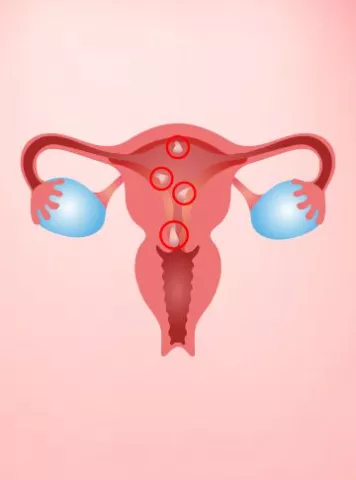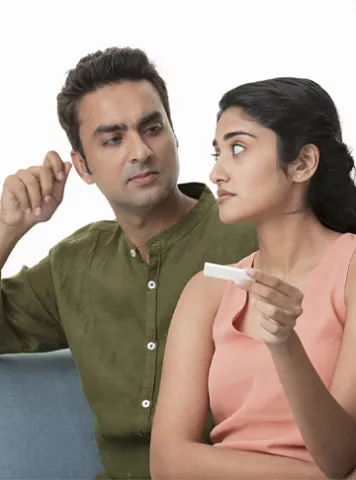Most of the couples undergoing IVF treatment, conceive in upto three cycles. However there is a small proportion of couples who fail to conceive even after 3 cycles of IVF and are said to be suffering from recurrent implantation failure. Advanced testing is recommended in such patients and endometrial receptivity array (ERA) is one of the tests that can be done in such cases. It is a molecular diagnostic test that tests 238 different genes to find out the “window of implantation” or the best time for embryo transfer in a particular patient.
How does ERA help?
Consider embryos are the seeds and endometrium is the soil. For the seed to grow into a healthy plant, soil should have all the necessary minerals and nutrients in the right amount to nurture the plant. If it is not the case, then no matter how good quality the seed is, it’s never going to grow if it is implanted into an unprepared or hostile soil.
Success in IVF is a close interplay of good embryos and a receptive endometrium. Most of the embryos are now a days grown till blastocyst stage and then transferred. Meanwhile the patient who is receiving the embryos also receives progesterone hormone via vaginal gel or capsule or injections to prepare the endometrium to receive blastocyst embryos. It is assumed that after 6 days of this progesterone therapy endometrium becomes ready for implantation of blastocyst. But in few patients, the endometrium either matures early (say after 5 days of progesterone) or in some cases it matures late (say after 7 days of progesterone). These patients are said to have displaced “window of implantation” and require specially timed embryo transfer (personalised embryo transfer).
Who should opt for ERA?
Patients with 3 or more IVF failures
Can also be considered earlier in
A) Patients with thin endometrium
B) 2 cycles failed with donor eggs
How is ERA done?
For ERA, your endometrium is prepared in the similar manner as it is prepared during embryo transfer cycle. On the day when embryo transfer is supposed to be done, instead of embryo transfer a biopsy of inner lining of uterus(endometrium) is taken and sent for analysis. This procedure does not require anaesthesia and thus can be done on out patient basis. It is not a painful procedure but can cause a little discomfort which can be managed by simple analgesics.
How is ERA report interpreted?
A normal ERA report labelled as receptive endometrium is reassuring and in such patients other possible causes of IVF failure should be looked for.
Abnormal ERA report can be labelled as either Pre-Receptive Endometrium or Post-receptive endometrium.
In patients whose report is abnormal means that their endometrium is not ready to receive and implant the embryos after conventional progesterone therapy and in them a personalised embryo transfer should be done 1/2 day prior or later than usual depending on ERA report recommendation.
Why one should avail it?
In today’s era of advanced medicine, “one size fits all” policy is not acceptable. Repeated IVF failures can be emotionally, physically and financially draining for the couples. Some studies have shown that in women who have 3 or more IVF failures, displaced window of implantation is seen in upto 27.5% of patients and these patients can be benefitted from ERA.
ERA is simple , reproducible and does not change over long duration like 1-2 years and thus does not need to be repeated.
How much does ERA cost?
ERA costs around 35-40,000 INR which is much less than a single IVF cycle.
Articles
2023


World AIDS Vaccine Day 2023: Can HIV & AIDS affect fertility or your infant’s health?
World AIDS Vaccine Day is observed every year on the 18th of May to create awa...
2023


Male Infertility Infertility Tips
Hyperspermia: Causes, Symptoms, Diagnosis & Treatment
What is Hyperspermia? Hyperspermia is a condition where an individual produ...


Guide to infertility treatments Infertility Tips
पीआईडी: पेल्विक इनफ्लैमेटरी डिजीज और निःसंतानता
पीआईडी - पेल्विक इनफ्लैमेटरी �...
2022


Infertility Tips Uterine Fibroids
Endometrial Polyps (Uterine Polyps)
What are Endometrial Polyps (Uterine Polyps)? Endometrial polyps, often ref...
2022


Female Infertility Infertility Tips
Why do You Need Fertility Treatment
As we all know infertility rate is constantly rising in our society day by day...
2022


Cesarean Section Vs Natural Birth
Surrogacy centers in Delhi and Infertility centers in Pune state that there ar...
2022


ನಿಮಗೆ ಹುಟ್ಟಲಿರುವ ಮಗುವನ್ನು ಅರ್ಥಮಾಡಿಕೊಳ್ಳುವುದು: ಗರ್ಭದಲ್ಲಿ ಮಗು ಹೇಗೆ ಬೆಳೆಯುತ್ತದೆ!
ವೀರ್ಯವು ಮೊಟ್ಟೆಯನ್ನು ಭೇಟಿಮಾಡ�...
2022


Diet Chart for Pregnant Women: The Right Food for Moms-To-Be
Pregnancy Food Chart 1. The daily diet must include the right amount of pro...
2022


Can i become pregnant while my tubes are tied?
Pregnancy is one of the most important phases in women’s life and is conside...
2022


9 days towards 9 months
A couple after facing all odds finally come knocking the door of medicine and ...
Pregnancy Calculator Tools for Confident and Stress-Free Pregnancy Planning
Get quick understanding of your fertility cycle and accordingly make a schedule to track it














